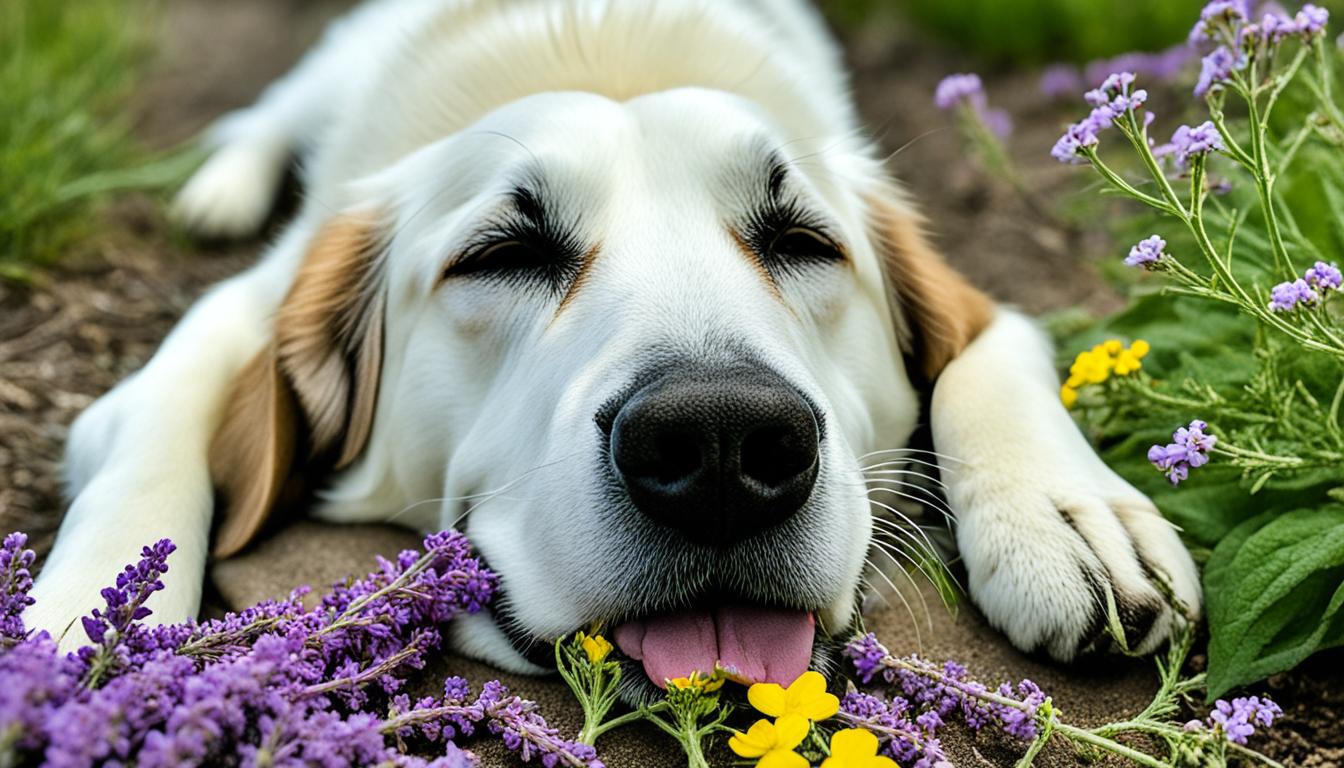Effective Dog Training Strategies
Consistency and trust are two fundamental aspects of effective dog training. By understanding the importance of consistency in training and the role of trust, pet owners can establish a strong foundation for successful training sessions.
Importance of Consistency in Training
Consistency is crucial when it comes to training dogs. Dogs thrive on routine and predictability, making consistency a key component of their learning process. By consistently applying the same commands, rewards, and corrections, clear signals are sent to the dog, facilitating their understanding of the desired behaviors.
Inconsistency in training can lead to confusion and stress for both the dog and the owner. Dogs rely on repetition to internalize behaviors, and inconsistency can hinder their learning progress. For example, rewarding a behavior one day and scolding for the same action the next day can be confusing for the dog.
Consistency also helps establish a sense of routine and predictability for the dog. This stability creates a secure environment and reduces anxiety, allowing the dog to focus on learning and building a strong bond with their owner (Dances with Dogs). Clear and consistent rules contribute to a harmonious relationship between the owner and the dog, reducing stress levels for both parties involved.
Role of Trust in Training
Trust plays a significant role in dog training. Building trust and security in dogs is essential for successful training sessions. When dogs trust their owners, they are more likely to feel safe and comfortable during training, leading to better cooperation and faster learning.
Consistency in training helps develop trust between the owner and the dog. Dogs rely on the consistent application of commands and rewards to understand what is expected of them. When they can predict the outcome of their actions, they feel secure and develop trust in their owner’s guidance (Dances with Dogs). Trust allows dogs to relax and focus on the training process, enabling them to learn new behaviors more effectively.
Establishing trust also involves creating a positive and nurturing environment for the dog. Using positive reinforcement, such as treats, praise, and play, helps build trust and strengthens the bond between the owner and the dog. Dogs respond well to positive reinforcement, as it rewards desired behaviors and encourages them to repeat those behaviors.
By prioritizing consistency and trust in dog training, pet owners can create a solid foundation for effective training sessions. Consistent application of commands and rewards, along with building trust through positive reinforcement, will contribute to successful training outcomes and strengthen the bond between the owner and their furry companion.
Utilizing Reinforcement Techniques
To effectively train dogs and address separation anxiety, it’s important to utilize reinforcement techniques that encourage positive behavior. Positive reinforcement plays a significant role in dog training and can be highly effective in shaping desired behaviors.
Positive Reinforcement in Dog Training
Positive reinforcement involves rewarding your dog for displaying desired behaviors. This approach focuses on providing something positive, such as a pat on the head, play sessions, fun toys, walks, or food treats, to motivate and reinforce the behavior you want to see (VCA Canada). By associating the desired behavior with a positive outcome, your dog is more likely to repeat that behavior in the future.
When using positive reinforcement, it’s essential to be consistent and timely in delivering the reward. The reward should be given immediately after the desired behavior is performed to avoid reinforcing unintended behaviors. For example, if you are teaching your dog to sit, the reward should be provided as soon as your dog sits, not when it stands up or barks.
Timing of Reinforcement
The timing of reinforcement is crucial in dog training. It’s important to reward your dog immediately after they have performed the desired behavior. This helps your dog make the connection between the behavior and the consequence, reinforcing their understanding of what they did right (VCA Canada).
It’s also important to note that the timing of reinforcement can impact the effectiveness of the training. If the reward is delayed or given too late, your dog may not associate it with the desired behavior, leading to confusion and potentially reinforcing unintended behaviors. Therefore, it’s crucial to provide the reward promptly after the behavior is performed correctly.
In addition to timing, the frequency of reinforcement can also influence training success. Continuous reinforcement, where a reward is given every time the desired behavior occurs, is useful for teaching new tasks. On the other hand, intermittent reinforcement, where rewards are given intermittently, helps maintain behavior over time (VCA Canada). By varying the frequency of rewards, your dog learns that the behavior is consistently rewarding, even if the reward is not given every time.
Remember, rewards should be given immediately after the task is completed, and praise should always be included as part of the reward package. This combination of rewards, along with verbal and physical praise, helps ensure successful training sessions and strengthens the bond between you and your dog.
By utilizing positive reinforcement techniques and ensuring timely and consistent rewards, you can effectively train your dog and help alleviate separation anxiety. Patience, consistency, and a positive approach will go a long way in teaching your dog new behaviors and promoting a happy and well-adjusted furry companion.
Addressing Separation Anxiety
Separation anxiety in dogs is a common condition that occurs when a dog becomes overly attached to its owner and experiences significant stress and anxiety when left alone. This can result in destructive behaviors such as clawing doors, destroying furniture, or having accidents in the house. Understanding separation anxiety in dogs is essential for implementing effective training strategies to alleviate this issue.
Understanding Separation Anxiety in Dogs
Separation anxiety is more than just your dog missing you when you’re not around. It is a complex behavioral issue that arises from a deep emotional bond between the dog and its owner. When left alone, dogs with separation anxiety can experience intense distress, leading to a range of undesirable behaviors.
It’s important to note that separation anxiety is not a form of misbehavior or disobedience. It is a genuine expression of anxiety and stress. Dogs with separation anxiety may exhibit signs such as excessive stress when left alone, including whining, pacing, drooling, destructive behavior, and having accidents in the house. These behaviors are typically not displayed to the same extreme when the owner is present.
Recognizing the signs of separation anxiety in your dog is crucial for developing an appropriate training plan. By understanding the underlying cause of the behavior, you can implement strategies that address your dog’s specific needs.
Recognizing Signs of Separation Anxiety
Signs of separation anxiety in dogs can manifest differently depending on the individual dog. However, common indicators include:
- Whining or barking excessively when left alone
- Pacing or restlessness
- Drooling or excessive salivation
- Destructive behavior, such as chewing furniture or clawing doors
- Attempts to escape confinement, such as scratching at windows or doors
- Having accidents in the house, despite being house-trained
If you observe these behaviors consistently when you leave your dog alone, it is likely a sign of separation anxiety. It’s important to note that these behaviors can also be caused by other factors, so consulting with a veterinarian is recommended to rule out any underlying medical conditions.
Once you have recognized the signs of separation anxiety in your dog, you can begin implementing appropriate training approaches to alleviate their anxiety and help them feel more comfortable when left alone.
In the next section, we will explore effective training approaches for separation anxiety, including desensitization techniques and the elimination of departure cues. These strategies can help gradually acclimate your dog to being alone and reduce their anxiety levels.
Training Approaches for Separation Anxiety
When it comes to addressing separation anxiety in dogs, it’s important to employ effective training approaches that can help alleviate their distress. Two commonly used methods for separation anxiety training are desensitization and eliminating departure cues.
Desensitization Training Method
Desensitization is considered the most effective method for training dogs with separation anxiety to be left alone. This approach aims to change the dog’s emotional response to the owner’s departure. The key to successful desensitization training is to keep the dog below their stress threshold (Tails of Connection). This involves gradually and systematically exposing the dog to brief periods of separation in a controlled and safe environment.
During desensitization training, it’s important to pay attention to the dog’s body language and behavior. Signs of stress and anxiety may include lip licking, pacing, panting, scratching, salivating, and digging. The training sessions should be structured in a way that allows the dog to practice being left alone for short increments without exhibiting signs of stress. It’s crucial to return before these signs appear to ensure that the dog remains comfortable and relaxed.
Eliminating Departure Cues
Departure cues are actions or behaviors that dogs associate with their owners leaving, such as picking up keys, putting on shoes, or taking a shower. These cues can trigger anxiety in dogs with separation anxiety. To make training sessions more manageable, it is recommended to either eliminate or desensitize departure cues (Tails of Connection).
If it is not possible to eliminate departure cues, desensitization is necessary before incorporating them into training sessions. This involves gradually exposing the dog to the cues in a controlled manner, ensuring that they do not provoke anxiety or distress. By desensitizing the dog to these cues, they can learn to associate them with non-threatening situations, reducing their anxiety response.
Both desensitization and the elimination of departure cues require patience, consistency, and a structured approach. It is recommended to design separation anxiety training sessions that include warm-up phases with short repetitions, a goal duration phase with longer departures, and a cool-down phase with additional short departures. The number of repetitions and duration should be tailored to the individual dog’s response and needs (Tails of Connection).
For effective training and guidance, it is highly recommended to seek the assistance of a certified separation anxiety trainer (CSAT) or an SA Pro Trainer™. These professionals specialize in treating separation anxiety and can provide expert guidance using positive reinforcement techniques. Working with a qualified trainer ensures that the training is tailored to your dog’s specific needs and avoids the use of aversive tools that may cause unnecessary stress (Tails of Connection).
By utilizing desensitization and addressing departure cues, pet owners can take proactive steps to help their dogs overcome separation anxiety and create a more calm and comfortable environment for their furry friends.
Professional Training Support
When it comes to addressing separation anxiety in dogs, seeking professional training support can greatly enhance the effectiveness of your efforts. Professional trainers who specialize in separation anxiety can provide guidance, structure, and expertise to help you and your furry friend overcome this challenging condition.
Certified Separation Anxiety Trainers
One highly recommended option is to work with a certified separation anxiety trainer (CSAT) or an SA Pro Trainer™. These trainers have undergone specialized training and certification in treating separation anxiety in dogs. They possess the knowledge and experience necessary to develop tailored training plans that address the specific needs of your dog.
It’s important to choose a trainer who utilizes positive reinforcement techniques and avoids aversive tools such as bark collars. Positive reinforcement training focuses on rewarding desired behaviors rather than punishing unwanted behaviors. This approach creates a positive and supportive learning environment for your dog, promoting trust and cooperation (Tails of Connection).
Seeking guidance from a certified separation anxiety trainer can significantly increase the chances of success in addressing separation anxiety and helping your dog feel more comfortable when left alone.
Follow-Up Sessions for Continued Progress
Reputable dog training programs often offer follow-up sessions to ensure continued progress after the initial training program is complete. These follow-up sessions serve as an opportunity to address any challenges or issues that may arise as you continue to work on separation anxiety with your dog.
During these sessions, the trainer can assess your dog’s progress, provide additional training techniques or modifications, and offer guidance on how to maintain consistency in your training efforts. These follow-up sessions are crucial in reinforcing what you and your dog have learned and in addressing any setbacks or hurdles that may occur along the way.
By participating in follow-up sessions, you and your dog can continue to build on the progress made during the initial training program, ensuring long-term success in managing separation anxiety.
Remember, professional training support provides valuable expertise and personalized guidance to address separation anxiety in dogs. Working with a certified separation anxiety trainer and participating in follow-up sessions can greatly enhance your training efforts and help your dog find relief from separation anxiety.
Managing Separation-Related Behaviors
Separation-related problems in dogs, such as separation anxiety, can be a source of distress for both the dog and the owner. However, there are strategies and techniques that can help prevent and treat these issues. In this section, we will explore how to manage separation-related problems in dogs, including prevention and treatment options.
Preventing and Treating Separation-Related Problems
Prevention is key when it comes to separation-related problems in dogs. By implementing proper training and gradually exposing your dog to being alone, you can help prevent the development of separation anxiety. Some prevention strategies include:
-
Gradual departures: Start by leaving your dog alone for short periods of time and gradually increase the duration. This helps your dog become accustomed to your absences.
-
Crate training: Proper crate training for dogs can provide a safe and secure space for your dog when you’re away. It can help them feel more comfortable and reduce anxiety.
-
Creating a positive association: Associate your departures with positive experiences, such as providing interactive toys or treats that keep your dog occupied and entertained.
If your dog is already experiencing separation-related problems, it’s important to seek professional guidance and implement appropriate behavioral treatments. Treating separation anxiety may involve a combination of techniques, including:
-
Behavioral modification: This approach focuses on gradually exposing your dog to situations that trigger anxiety, helping them learn to cope with being alone. Desensitization and counterconditioning techniques are commonly used to change your dog’s emotional response to being separated from you.
-
Medication: In severe cases, medication may be prescribed by a veterinarian to help manage the anxiety symptoms. Medication should always be used under the guidance and supervision of a qualified professional.
-
Environmental enrichment: Providing your dog with mental and physical stimulation can help reduce anxiety and redirect their focus. Interactive toys, puzzles, and engaging activities can keep your dog occupied and alleviate stress.
For more information on managing separation-related problems and specific training techniques, consult with a certified professional dog trainer or a certified separation anxiety trainer. They can assess your dog’s specific needs and develop a tailored training plan to address the separation-related behaviors effectively.
Behavioral Treatments for Separation Anxiety
Behavioral treatments play a vital role in addressing separation anxiety in dogs. Some commonly used behavioral treatments include:
-
Crate training: As mentioned earlier, proper crate training can provide a safe and secure space for your dog when you’re away. It can help them feel more comfortable and reduce anxiety. However, it’s important to introduce the crate gradually and associate it with positive experiences.
-
Creating a predictable routine: Establishing a consistent routine for your dog can help reduce anxiety. This includes regular feeding times, exercise sessions, and departures. Predictability can provide a sense of security and comfort for your dog.
-
Gradual departures and arrivals: Practice leaving and returning home in a calm and low-key manner. Gradually increase the duration of your departures to help your dog become more accustomed to being alone. Avoid making departures and arrivals highly emotional or dramatic.
-
Positive reinforcement: Reward your dog for calm and relaxed behavior when you’re away. This can be done through treats, praise, or interactive toys. By reinforcing calm behavior, you can help your dog associate being alone with positive experiences.
Remember, addressing separation-related behaviors requires patience, consistency, and a tailored approach. Professional guidance from a certified separation anxiety trainer can be invaluable in developing an effective training plan for your dog’s specific needs. By implementing these behavioral treatments, you can help your dog overcome separation anxiety and improve their overall well-being.






